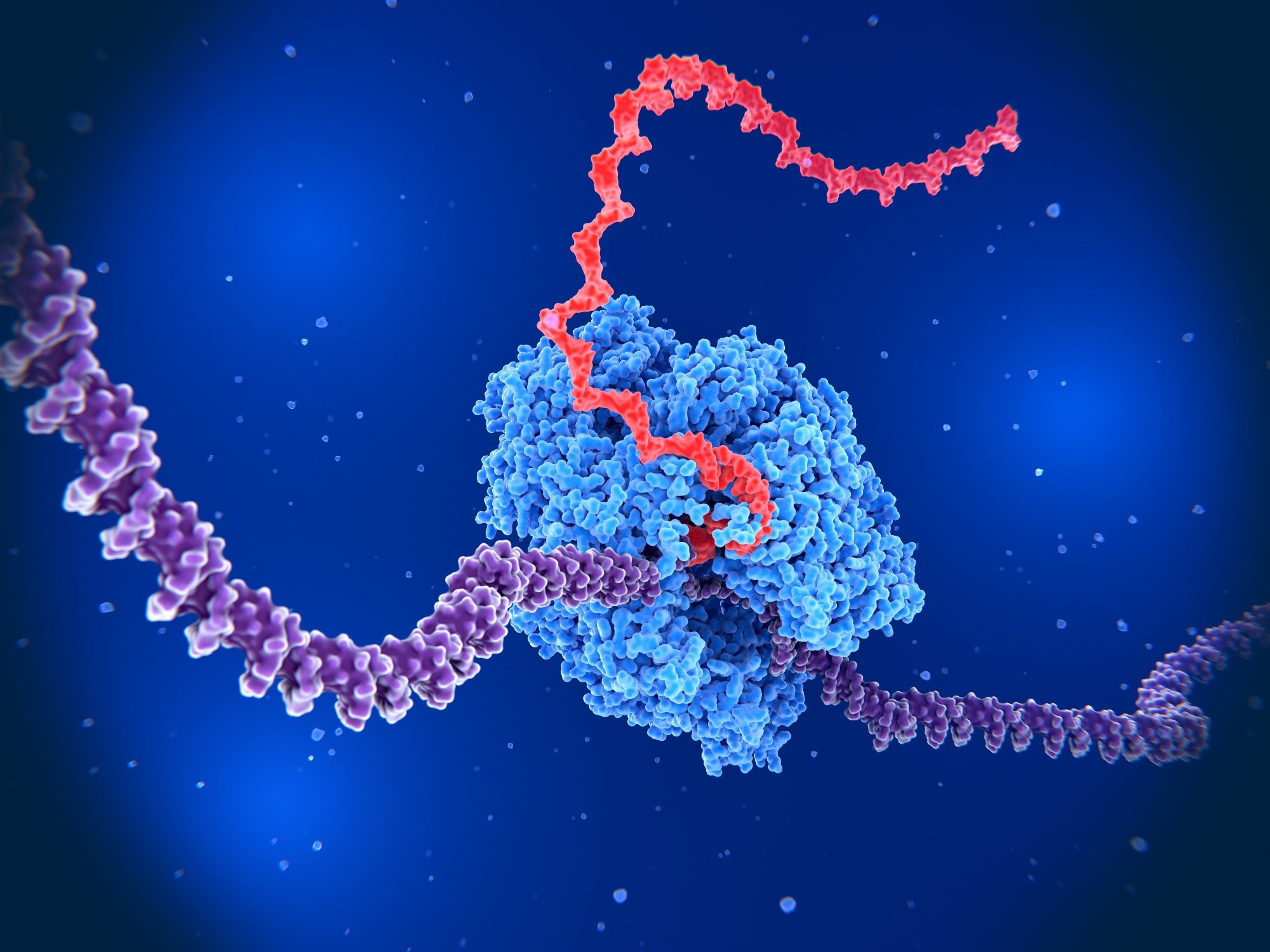 By Pooja Toshniwal PahariaReviewed by Lexie CornerJun 16 2025
By Pooja Toshniwal PahariaReviewed by Lexie CornerJun 16 2025A recent study in Nature Communications examined how RNA polymerase I (Pol I) responds to abasic (Ap) site formation—the most common type of DNA damage. The researchers found that Pol I helps maintain genome integrity by stalling at these lesion sites.
This stalling prevents the buildup of faulty transcripts, regulates ribosomal RNA (rRNA) production, and exposes the damaged DNA to repair proteins. Pol I is especially active in rapidly dividing cells, such as cancer cells, which require high levels of ribosome production.
Inhibiting Pol I may, therefore, impair tumor growth without significantly affecting normal cells that have lower rRNA demands.
 Image Credit: Juan Gaertner/Shutterstock.com
Image Credit: Juan Gaertner/Shutterstock.com
DNA Damage and Cellular Responses
DNA damage threatens genome stability, which is essential for cell function. Abasic sites are a frequent form of DNA damage in eukaryotic cells. These lesions disrupt both DNA replication and transcription. Detecting and responding to such damage is vital for cell survival.
Cells primarily repair abasic sites through base excision repair (BER), with nucleotide excision repair (NER) as a secondary pathway. Ap sites are known to stall DNA-dependent RNA polymerases (RNAPs). RNA polymerase II (Pol II) briefly stalls at these sites before slowly bypassing them. However, how Pol I responds to this form of damage was previously unclear.
About the Study
The researchers studied how Pol I stalls at abasic DNA lesions.
They purified Pol I and Pol II enzymes from Saccharomyces cerevisiae yeast. Using cryo-electron microscopy (cryo-EM), they captured high-resolution images (2.80 to 3.50 Å) of Pol I at various stages: post-translocated, paused, stalled, and RNA-cleaving complexes. The final concentration of Pol I in the stalled sample was 0.240 mg/ml.
Cryo-EM revealed changes in the Pol I cleft and its interaction with the A12 subunit. The team used three-dimensional classification to refine Pol I conformations. RNA extension assays with mismatched transcription bubbles and minimal scaffolds assessed how Pol I stalls at Ap sites in vitro. These experiments measured nucleotide incorporation, lesion bypass, and RNA cleavage in elongation complexes containing abasic site analogs.
They also tested Pol I with different nucleotides to see which ones it incorporated opposite the abasic site. A non-hydrolyzable ATP analog (AMPCPP) simulated nucleotide insertion. Similar experiments with Pol II helped compare the two enzymes’ behavior at abasic lesions.
Results
Pol I stalls at abasic sites through a specific structural mechanism. Unlike bulky lesions that completely block transcription, abasic lesions allow Pol I to slowly insert a purine (usually adenine, following the "A rule"). This occurs through base stacking between the RNA 3′-end and the bridge helix in Pol I.
After adding a nucleotide, Pol I does not bypass the lesion. Instead, it stalls. This stalling triggers a conformational change that widens the enzyme’s DNA-binding cleft. The widened cleft allows RNA cleavage and better exposure of the damaged DNA to repair proteins. Base tilting and hydrogen bonding help stabilize the complex. The A12 subunit gains access to the active site and assists with RNA cleavage, halting further elongation and reducing bypass.
In contrast, Pol II is more likely to continue transcription past abasic sites. It can fully translocate after adding nucleotides and uses backtracking and proofreading, assisted by transcription factor IIS (TFIIS), to correct mistakes.
While Pol I opens its DNA-binding cleft to facilitate repair, Pol II maintains a tight grip on the DNA/RNA hybrid. This enables Pol II to push through damaged regions and continue transcription. Pol I halts completely before bulky lesions, such as cyclobutane pyrimidine dimers, caused by UV exposure.
Pol II, on the other hand, slowly continues incorporating nucleotides beyond such lesions. These differences show that Pol I prioritizes damage sensing and repair, while Pol II focuses on transcription continuity.
Download your PDF copy now!
Implications
This study reveals that RNA polymerase I uses a unique stalling mechanism at abasic DNA sites, distinct from RNA polymerase II. Pol I’s tendency to stall prevents the production of defective rRNA and protects genetic information. This contributes to proper ribosome assembly and protein synthesis.
The findings have broader implications. Pol I’s behavior could help reduce cellular stress and limit tumor growth. It may also play a role in diseases related to faulty DNA repair, including neurodegenerative conditions and premature aging.
Journal Reference
Santos-Aledo, A., et al. (2025). Cryo-EM uncovers a sequential mechanism for RNA polymerase I pausing and stalling at abasic DNA lesions. Nature Communications. DOI:10.1038/s41467-025-60536-4, https://www.nature.com/articles/s41467-025-60536-4